About Triceratops
| Scientific Name (Genus) | Triceratops |
| Meaning of Name |
Three-horned face
tri (three) [Greek] - kerat (horn) [Greek] - ōps (face) [Greek] |
| Classification | Ornithischia, Marginocephalia (Ceratopsia, Ceratopsidae, Chasmosaurinae) |
| Total Length | Approx. 9m |
| Diet | Herbivorous |
| Period | Late Cretaceous |
| Sub-classification/Species |
Triceratops horridus
Triceratops prorsus |
| Year of Paper Publication | 1889 |
| Publication |
Notice of new American Dinosauria.
American Journal of Science. 37. by Marsh, O.C. ,1889. |
Features
Triceratops is one of the most famous dinosaurs, alongside Tyrannosaurus. It was one of the largest ceratopsians, living in North America at the very end of the Cretaceous period. It is estimated to have been about 9 meters long and weighed between 6,000 and 12,000 kg.
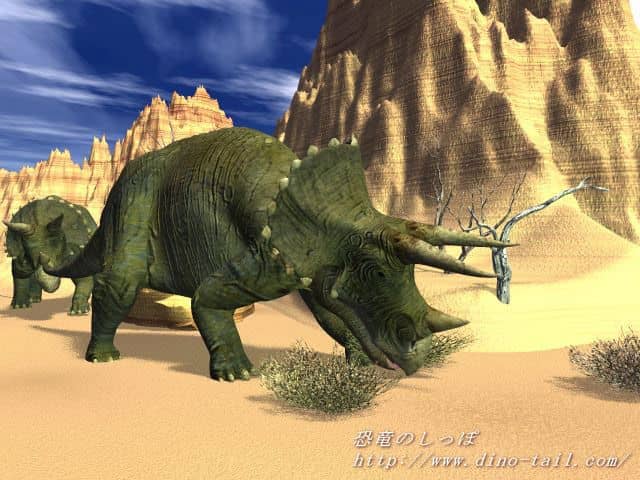
The most distinctive feature of Triceratops, as its name suggests, is the three horns on its head. The prevailing theory is that the two horns above its eyes and the one on its nose were used as defensive weapons.
There are various theories about the function of its large frill. Besides being "armor to protect the neck," other theories include "a display to attract mates," "a way to make the body look bigger to intimidate enemies," and "a tool for territorial disputes."
A frill with a wound thought to have been inflicted by a large carnivorous dinosaur has also been found. Its function was likely not limited to just one purpose.
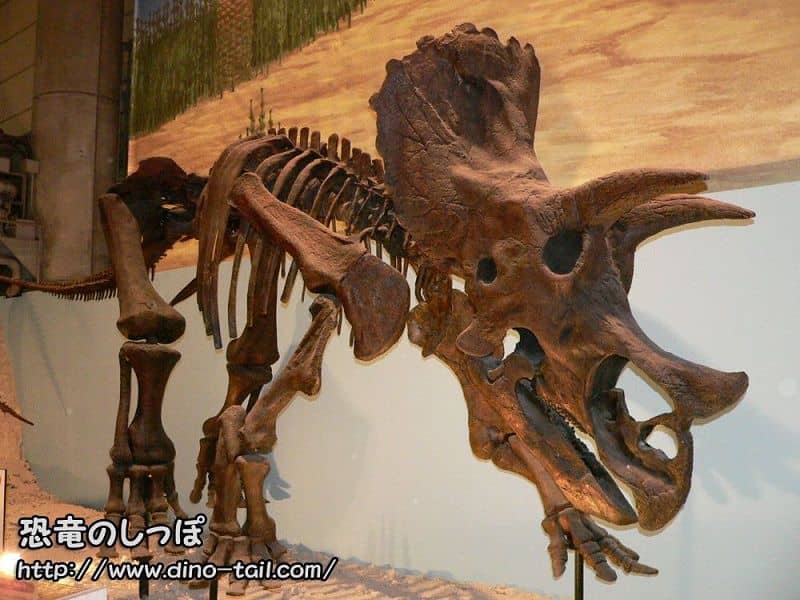
It had a strong jaw and is presumed to have eaten the tough fruits of angiosperms that flourished during the Cretaceous period.
Triceratops is also used in the [phylogenetic definition of Dinosauria]. Dinosaurs are defined as "the most recent common ancestor of Triceratops and modern birds (Neornithes), and all its descendants." Here, "Triceratops" itself has no special meaning; it is simply used as a well-known representative of the Ornithischia. (In the definition, "Neornithes" represents Theropoda, and thus Saurischia.)
Horn Shape Change and Growth
The horns of Triceratops changed shape as it grew.
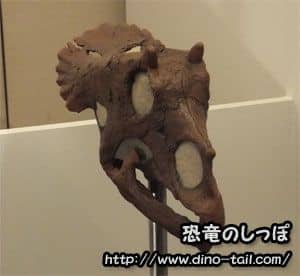
At birth, the horns were short and straight.
Young Triceratops had brow horns that curved significantly backward, and as they grew, the curve lessened, and the horns eventually pointed forward.
However, it is also known that there was significant individual variation in the shape of the frill and horns. Some species that were previously identified as separate based on differences in frill and horn shape are now considered to be variations due to individual and growth differences, and only two species, "Triceratops horridus" and "Triceratops prorsus," are recognized as valid.
Furthermore, the relationship between these two species may be more than just a simple difference in kind. A detailed examination of the rock layers reveals that Triceratops horridus , with its shorter and smaller nasal horn, is mainly found in older strata (lower layers), while Triceratops prorsus , with its longer and larger nasal horn, is found in younger strata (upper layers). The prevailing theory is that this may represent a process of "anagenesis," where the species Triceratops horridus transformed into the species Triceratops prorsus within a single lineage over millions of years.
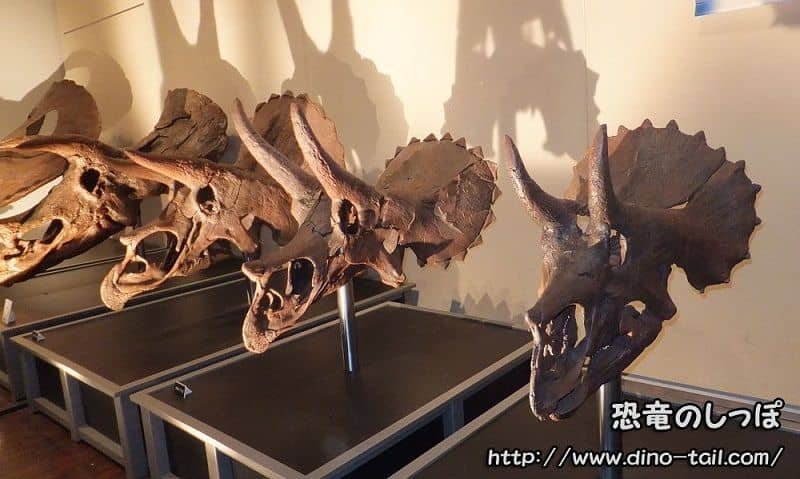
Growth proceeds from front-right (youngest) to back-left
The Feet of Triceratops
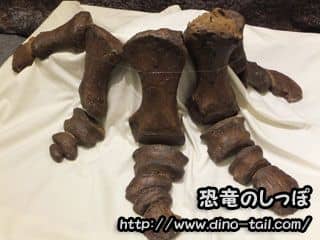
It is thought that it supported much of its weight on its forefeet to hold up its heavy head.
The first three digits of the forefoot (thumb to middle finger) were well-developed and supported each other, creating a strong structure. This suggests that these three digits supported the large head. The ring and little fingers seem to have played a lesser role in supporting the body.
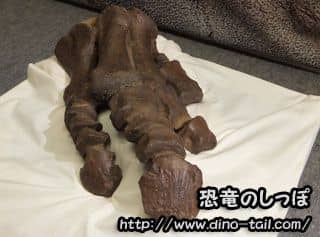
The middle toe of the hindfoot was the longest, and the number of bones in the outer toes increased.
Compared to the forefoot, the contact area was smaller, indicating it was not well-suited for bearing weight.
The Fate of the Torosaurus Same-Genus Theory
Torosaurus is a ceratopsian described in 1891, two years after Triceratops. It is considered a close relative of Triceratops due to its similar time period, distribution, and features. The main difference was the presence of openings in its frill.
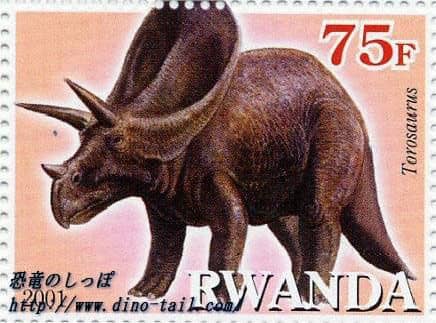
In September 2009, at a meeting of the Society of Vertebrate Paleontology in the UK, paleontologist John Scannella proposed that "Torosaurus is a mature individual of Triceratops." Furthermore, in 2010, the famous "dinosaur doctor" Jack Horner and John Scannella analyzed the growth patterns of 29 Triceratops and 9 Torosaurus skull specimens. While acknowledging significant individual variation in frill shape, they published a co-authored paper, "Torosaurus Marsh, 1891, is Triceratops Marsh, 1889 (Ceratopsidae: Chasmosaurinae): synonymy through ontogeny" (2010), in which they suggested that the holes in the frill were a developmental feature to reduce the burden of increased weight in mature individuals, implying that "Triceratops and Torosaurus are the same genus." However, this paper was not widely accepted by many scholars from the beginning. Many scholars disputed this theory.
Because the topic involved the immensely popular Triceratops, the issue with Torosaurus was widely reported in the media and online.
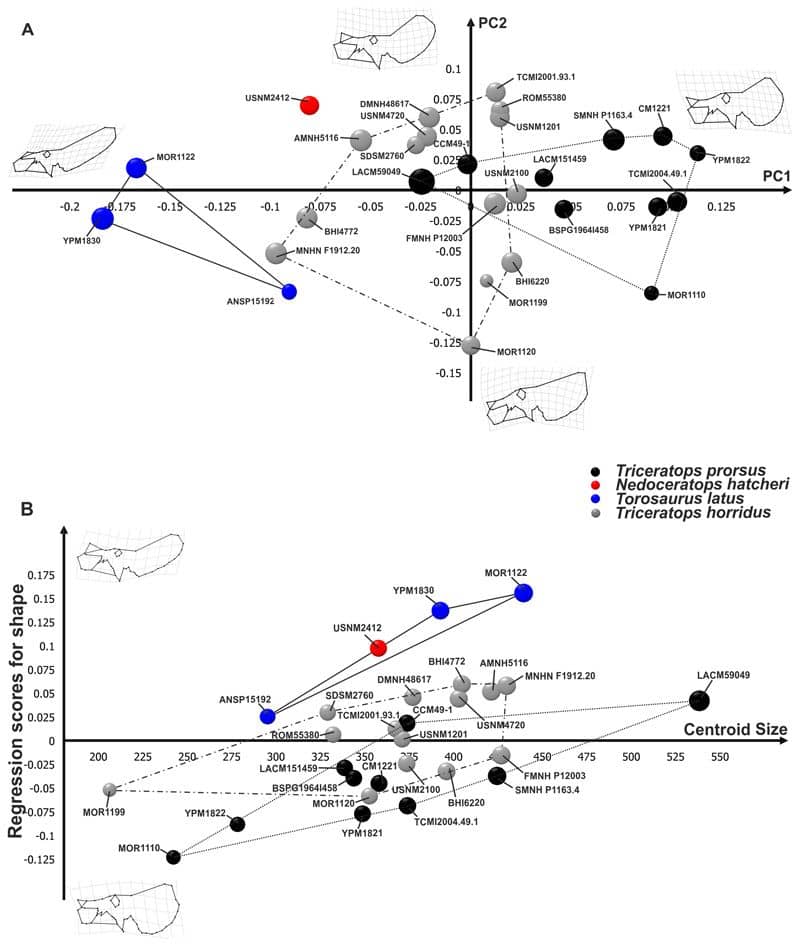
This paper takes a negative stance on the same-genus theory.
Source: Is Torosaurus Triceratops? Geometric Morphometric Evidence of Late Maastrichtian Ceratopsid Dinosaurs. by Maiorino L., Farke A.A., Kotsakis T., Piras P., 2013 PLoS ONE 8
From 2012, counter-arguments began to be published in earnest.
Longrich re-examined the differences in the frill and showed that the holes in the Torosaurus frill could not have developed from the growth of a Triceratops. While he acknowledged that parts of the Triceratops frill thinned with age, these locations were different from where the holes in Torosaurus are found. At the same time, it was suggested that some supposedly mature Torosaurus specimens were actually young individuals.
In 2013, Leonardo Maiorino and Andrew Farke analyzed the changes in the skulls of Torosaurus and Triceratops using geometric morphometrics. They also argued that "Triceratops and Torosaurus are different genera" (in the paper "Is Torosaurus Triceratops? Geometric Morphometric Evidence of Late Maastrichtian Ceratopsid Dinosaurs" by Maiorino L., Farke A.A., Kotsakis T., Piras P., 2013).
The following counter-evidence was presented:
- Discovery of Young Torosaurus and Old Triceratops: Contradicting the same-genus theory, fossils of a still-young (subadult) Torosaurus and a Triceratops that was clearly elderly based on bone tissue but had no holes in its frill were confirmed.
- Differences in Frill Bone Structure: It was pointed out that the area around the holes in the Torosaurus frill shows complex bone structures from repeated absorption and regrowth, a feature not seen in Triceratops frills.
- Number of Epoccipitals: It was also found that the number of small bony projections (epoccipitals) decorating the edge of the frill is distinctly different between the two.
Based on this evidence, a scientific consensus has now been reached that Torosaurus and Triceratops, while closely related, are clearly distinct and separate genera .
Dueling Dinosaurs: A Life-and-Death Battle with Tyrannosaurus
In 2006, a miraculous fossil known as the "Dueling Dinosaurs" was discovered, showing a Tyrannosaurus and a Triceratops that died locked together in combat .
This specimen was found in the Hell Creek Formation in Montana and is housed at the North Carolina Museum of Natural Sciences. A broken tooth of the Tyrannosaurus is embedded in the hip area of the Triceratops fossil, while one of the Tyrannosaurus's finger bones was broken. This is unparalleled circumstantial evidence that the two died together after a fierce struggle.
Even more remarkably, this Triceratops has extensive skin impressions preserved. Its skin was covered in large hexagonal scales, with a conical projection in the center of each. This is a specimen that tells us in detail what Triceratops looked like in life.
Discovery and Publication
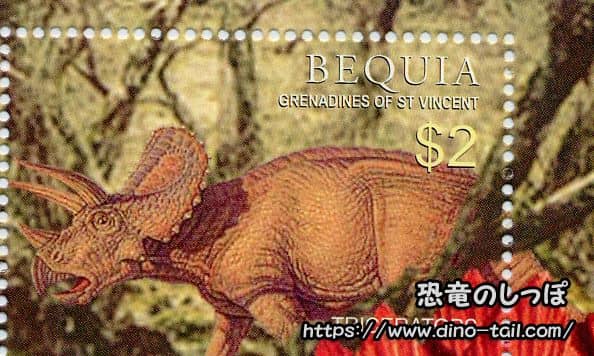
It was first excavated in Colorado, USA, in 1887. A horn part was found, but it was initially thought to belong to a giant bison and was given the scientific name "Bison alticornis." However, the following year, in 1888, a well-preserved skull with about 30% remaining was found, revealing that the horn was not from a bison.
In 1889, "Bison alticornis" was renamed "Triceratops."
The most commonly found part of Triceratops is its sturdy head. Research on the head, which is found in abundance, is well-advanced.
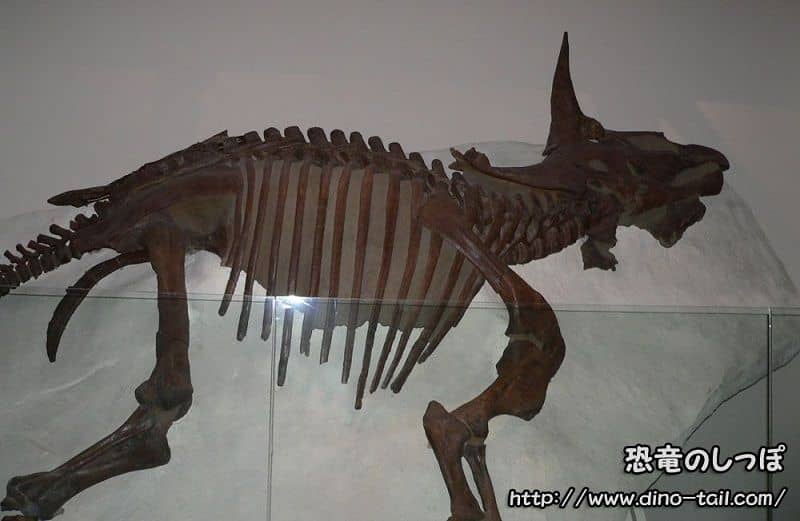
National Museum of Nature and Science, Tokyo
Complete skeletons of Triceratops are rare, but one of them is preserved and displayed at the National Museum of Nature and Science in Tokyo. It is a Triceratops horridus excavated in North Dakota, USA.
In 2012, three fossils were found in Wyoming, USA. One of them was small and belonged to a juvenile (child). It is possible they were a "family," but this is not known for sure.

Skin impression fossils showing a pattern of scales have also been found.
Triceratops tooth fossils seem to be relatively common. Regardless of size and condition, they can be obtained relatively inexpensively (around 10,000-15,000 yen as of 2018).
